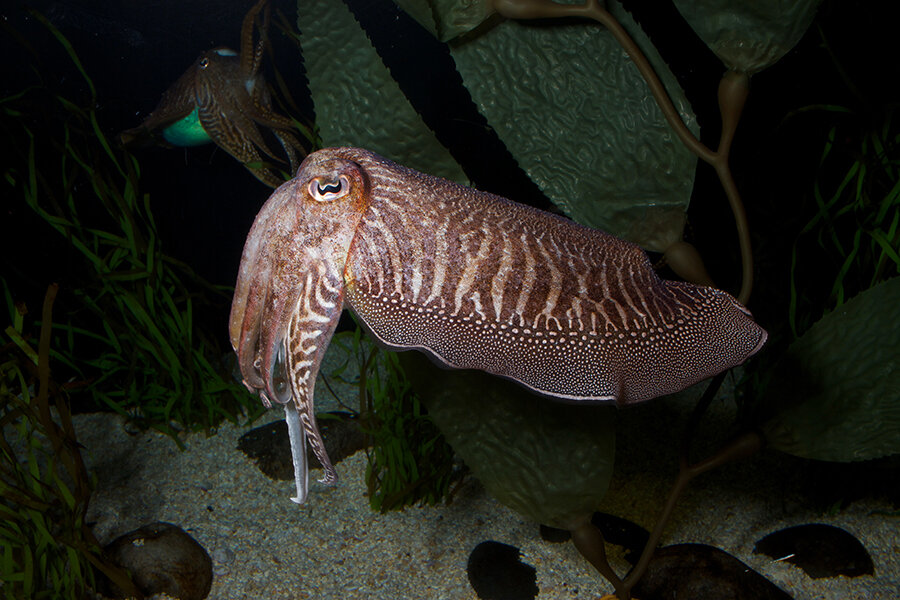How the world's smartest invertebrate could teach you how to hide
Loading...
Cuttlefish, popularly known as the "Chameleon of the sea," are experts at the art of concealment. They are incredible at camouflaging and can quickly change their colors to blend with the surroundings.
In a paper titled "The structure–function relationships of a natural nanoscale photonic device in cuttlefish chromatophores," published January 29 in the Journal of the Royal Society Interface, scientists at Harvard University and the Marine Biological Laboratory (MBL) seem to have found an answer to what makes cuttlefish rapidly alter the color and pattern of their skin.
Presence of nano-photonic devices called chromatophores help cuttlefish to dynamically change colors, said Kevin Kit Parker, Tarr Family Professor of Bioengineering and Applied Physics at the Harvard School of Engineering and Applied Sciences (SEAS) and core faculty member at the Wyss Institute for Biologically Inspired Engineering at Harvard, who was also the head of the research team that carried out the study on cuttlefish.
"Chromatophores were previously considered to be pigmentary organs that acted simply as selective color filters,” said Leila F. Deravi, co-author of the paper and a research associate in bioengineering at Harvard School of Engineering and Applied Sciences (SEAS). “But our results suggest that they play a more complex role; they contain luminescent protein nanostructures that enable the cuttlefish to make quick and elaborate changes in its skin pigmentation."
Chromatophores consist of many pigment layers, and some of the layers are like granules connected to each other in a tethered network, Dr. Parker told the Monitor. These granules regulate light through absorbance, reflection, and fluorescence, he said, even as the chromatophores within the body expand.
For a cuttlefish to change color, they need to be able to stretch, he adds.
And when a cuttlefish activates its coloration system, these chromatophores can change their surface area as much as 500 percent, according to a press release by SEAS.
But this camouflaging mechanism might be extremely hard to replicate, say researchers.
"For example, we cannot yet engineer materials that have the elasticity to expand 500 times in surface area. And were we able to do so, the richness of color of the expanded and unexpanded material would be dramatically different—think of stretching and shrinking a balloon, " said Evelyn Hu, Tarr-Coyne Professor of Applied Physics and of Electrical Engineering at SEAS, who is also a coauthor of the paper. "The cuttlefish may have found a way to compensate for this change in richness of color by being an 'active' light emitter (fluorescent), not simply modulating light through passive reflection."
A cuttlefish can change color at will and it can use this color as a fashion device – for mating – or as a camouflaging for use while hunting prey, says Parker.
Reverse engineering this biological system could help scientists to design new types of military camouflage, says Parker. Or we could use it to make clothes that change color, he adds.
"Throughout history, people have dreamed of having an 'invisible suit,'" Parker said. "Nature solved that problem, and now it’s up to us to replicate this genius so, like the cuttlefish, we can avoid our predators."
Cuttlefish are not actually fish. Rather, they are small mollusks, like squids and octopuses. WIth one of the largest brain-to-body-size ratio, these green-blooded sea animals with three hearts are the most intelligent of invertebrates.






